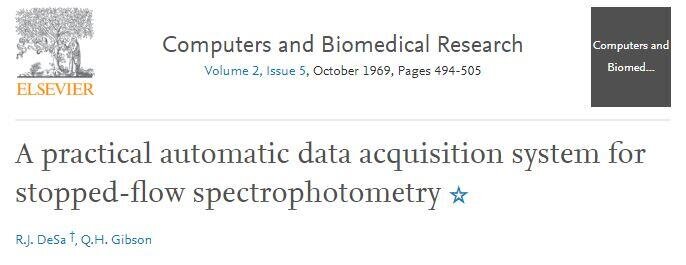Our Uv/vis Statements
Our Uv/vis Statements
Blog Article
The Spectrophotometers Statements
Table of Contents10 Simple Techniques For Uv/vis/nirThe Facts About Uv/vis/nir UncoveredA Biased View of Circular DichroismSome Known Incorrect Statements About Uv/vis The Ultimate Guide To Uv/vis

Spectrophotometry is most typically used to ultraviolet, noticeable, and infrared radiation, contemporary spectrophotometers can interrogate wide swaths of the electromagnetic spectrum, including x-ray, ultraviolet, noticeable, infrared, and/or microwave wavelengths. Spectrophotometry is a tool that hinges on the quantitative analysis of particles depending upon how much light is absorbed by colored substances.
8 Simple Techniques For Uv/vis/nir
A spectrophotometer is typically used for the measurement of transmittance or reflectance of solutions, transparent or nontransparent solids, such as refined glass, or gases. Lots of biochemicals are colored, as in, they absorb visible light and therefore can be determined by colorimetric procedures, even colorless biochemicals can often be transformed to colored substances suitable for chromogenic color-forming responses to yield compounds suitable for colorimetric analysis.: 65 However, they can also be designed to determine the diffusivity on any of the noted light ranges that normally cover around 2002500 nm using various controls and calibrations.
An example of an experiment in which spectrophotometry is utilized is the decision of the balance constant of a solution. A particular chain reaction within a service might happen in a forward and reverse direction, where reactants form items and products break down into reactants. At some point, this chemical response will reach a point of balance called an equilibrium point.
All about Uv/vis/nir
The quantity of light that goes through the solution is a sign of the concentration of certain chemicals that do not permit light to travel through. The absorption of light is due to the interaction of light with the electronic and vibrational modes of particles. Each kind of particle has an individual set of energy levels related to the makeup of its chemical bonds and nuclei and thus will take in light of particular wavelengths, or energies, leading to distinct spectral residential or commercial properties.
They are extensively utilized in lots of markets consisting of semiconductors, laser and optical production, printing and forensic evaluation, as well as in labs for the research study of chemical substances. Spectrophotometry is often utilized in measurements of enzyme activities, decisions of protein concentrations, decisions of enzymatic kinetic constants, and measurements of ligand binding reactions.: 65 Eventually, a spectrophotometer is able to determine, depending on the control or calibration, what compounds are present in a target and precisely how much through estimations of observed wavelengths.
Created by Arnold O. Beckman in 1940 [], the spectrophotometer was produced with the help of his coworkers at his business National Technical Laboratories established in 1935 which would end up being Beckman Instrument Business and ultimately Beckman Coulter. This would come as an option to the formerly created spectrophotometers which were unable to soak up the ultraviolet correctly.
Top Guidelines Of Uv/vis
It would be discovered that this did not give satisfying outcomes, therefore in Model B, there was a shift from a glass to a quartz prism which enabled much better absorbance results - circularly polarized luminescence (https://www.cgmimm.com/arts-entertainment/olis-clarity). From there, Design C was born with a change to the wavelength resolution which ended up having 3 systems of it produced
It was produced from 1941 to 1976 where the cost for it in 1941 was US$723 (far-UV accessories were an alternative at additional expense). In the words of Nobel chemistry laureate Bruce Merrifield, it was "most likely the most important instrument ever established towards the development of bioscience." Once it ended up being stopped in 1976, Hewlett-Packard produced the very first commercially find more info offered diode-array spectrophotometer in 1979 understood as the HP 8450A. It irradiates the sample with polychromatic light which the sample absorbs depending on its properties. It is sent back by grating the photodiode variety which spots the wavelength area of the spectrum. Since then, the production and execution of spectrophotometry devices has actually increased profoundly and has ended up being one of the most innovative instruments of our time.

The Basic Principles Of Circularly Polarized Luminescence
The grating can either be movable or fixed.
In such systems, the grating is repaired and the strength of each wavelength of light is determined by a various detector in the array. Furthermore, most modern mid-infrared spectrophotometers use a Fourier change method to obtain the spectral information - https://www.wattpad.com/user/olisclarity1. This technique is called Fourier change infrared spectroscopy. When making transmission measurements, the spectrophotometer quantitatively compares the portion of light that passes through a recommendation solution and a test solution, then digitally compares the intensities of the two signals and computes the percentage of transmission of the sample compared to the recommendation standard.

Report this page